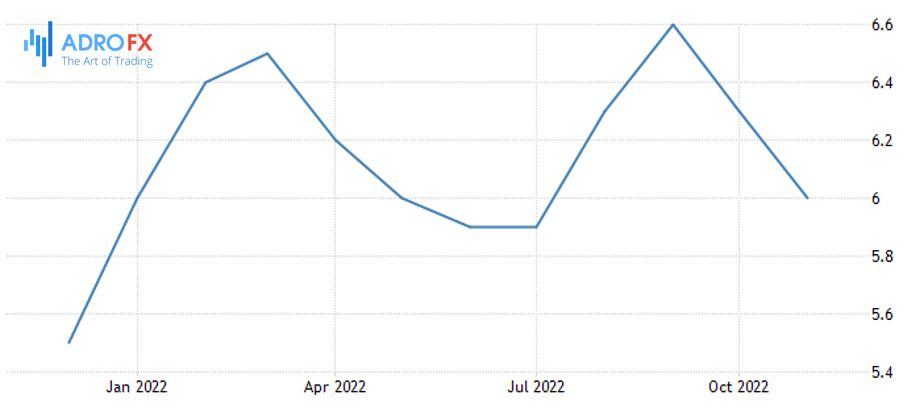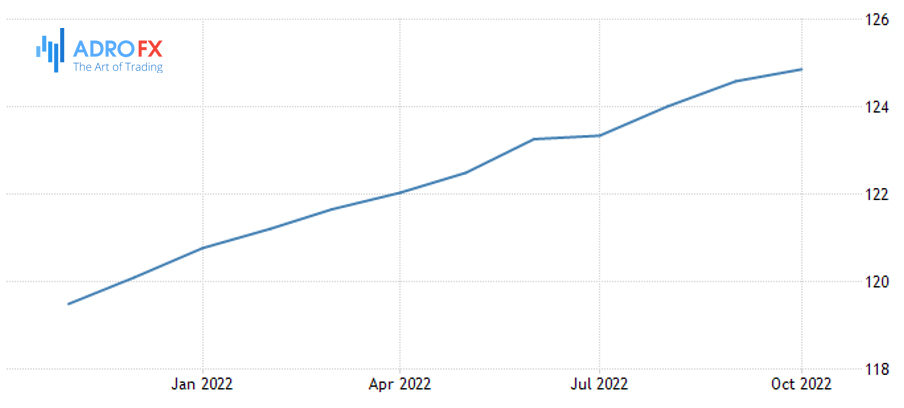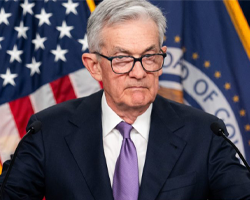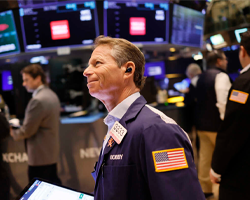U.S. Inflation Data Sets Up Market Optimism | Daily Market Analysis

Key events:
- USA – Crude Oil Inventories
- USA – FOMC Economic Projections
- USA – FOMC Statement
- USA – Fed Interest Rate Decision
- USA – FOMC Press Conference
- New Zealand – GDP (QoQ) (Q3)
According to data released yesterday, the U.S. consumer price index (CPI) growth slowed to +0.1% m/m in November from +0.4% m/m in October. The consensus forecast of analysts implied +0.3% m/m in November. On a year-on-year basis, CPI growth slowed to 7.1% in November (forecast +7.3% y/y) from +7.7% y/y in October.
The growth rate of core CPI in November slowed down to +0.2% mom compared to +0.3% mom in October.

Thus, consumer inflation in the U.S. has been slowing for five months in a row. At the core level, consumer inflation has been slowing for two months in a row. Also, note that on a month-to-month basis CPI showed the smallest growth of the year.
Moreover, housing costs are the largest component, accounting for about a third of the CPI. This component was up 0.6% - the smallest gain in four months. For the Fed, however, the preferred indicator of national price trends is the Personal Consumption Expenditures (PCE) price index. And the share of housing costs in the PCE is substantially lower.

As Fed Chair Jerome Powell pointed out in his public speech on September 30 (the last public speech before the silence period ahead of the December 14 rate decision), U.S. inflation should be measured in three areas: goods inflation, housing cost inflation, and services inflation excluding housing. In the first two categories, we are already seeing disinflationary processes. The third category, perhaps the most important category now for assessing the trajectory of inflation, looked ambiguous. However, prices in this category fell in a number of important components (airfare, hotels, medical care). Meanwhile, inflation in leisure and education services remains steady.
Before tonight's rate decision announcement and the release of updated forecasts (dot plot), the Fed got itself a very comfortable inflation report on consumer inflation. There is reason to believe that inflation will also slow in December (lower oil and gasoline prices, further reduction in inventories, which translates into discounts to end consumers). As a result, we will have 3 months in a row where consumer inflation at the core level shows a pace of deceleration. This may be reason enough for the Fed to hint, at the end of its meeting in late January, that it is now relevant to discuss a pause in the rate hike cycle. This raises the possibility that the Fed will be able to avoid a recession in the U.S. economy by achieving a so-called "soft landing."
The federal funds rate futures market, which is not news, is 100% plagued by expectations of a 50 bps rate hike in December. That said, after inflation data was released, the likelihood of a 50 bp rate hike in February was very much reduced. (January meeting is not scheduled). Now the market implies +25 bp. February 1. The money market has increased the likelihood that once the rate peaks in 2023, the rate will already be lowered by 50 bps by next December.
As for the market reaction, stocks in Europe and the U.S. showed a marked increase after the inflation data was released.

Treasury yields fell sharply across the curve. The yield on 2-year notes fell to its lowest level since October 6 at 4.133%. The yield on the 10-year notes fell to 3.412%. The dollar index reached its lowest level since June 16 at 103.57 p. The euro traded at a new 6-month high of 1.0673 against the dollar. Brent crude oil prices rose more than 2.4%.










